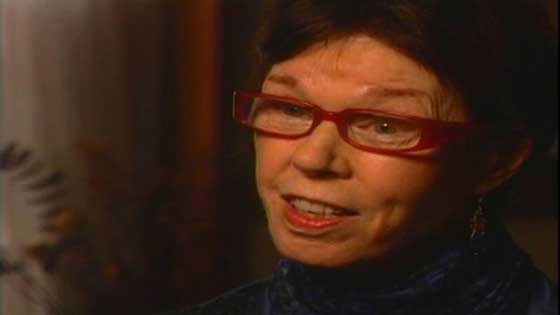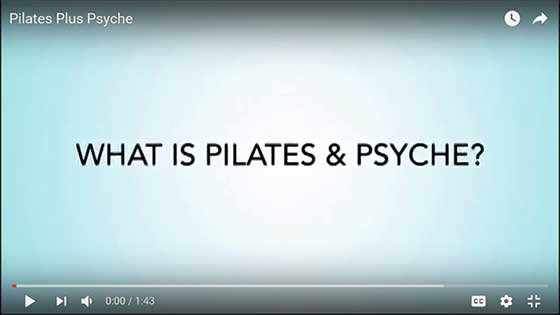PILATES PLUS PSYCHE
Jungian Typology and Pilates

Mary in session.
Carl Jung and his peers hammered out together the typological structure of the psyche - that each one of us experiences life in 4 ways - by Thinking, Feeling, Intuiting and Sensing. Jung called these four ways the four functions of the psyche. These four functions are the basis of Jungian typology.
Each of us has these four functions. Two of them will be in the ego conscious part of the psyche at birth and two will be in the unconscious. There are two sets of opposites. Thinking and Feeling are opposites. Sensation and Intuition are opposites.
One or the other of each of these opposite pairs will fall in the conscious, the other in the unconscious.
The two functions in the upper ego conscious part of the psyche are easier to access and more agreeable. The two which fall in the unconscious are less available, will present many difficulties, even what seems impossible to understand or change. The lower functions put us through hell.
Jung saw that our four functions lie in linear fashion, top to bottom.
#1 is the most dominant and available. We start from there. It will always be the easiest. It is in the conscious part of our psyches.
#2 is almost as dominant and available, also in the conscious.
#3 is just into the unconscious and would rather be left alone. It is rather sleepy and undirected until inspired. It is the bridge to the 4th function.
#4 is in the deepest recesses of the unconscious. It is the most primitive, full of fears, negative, resistant, contracted. It is often called the inferior function.
It is the most important and the hardest function to develop. Yet it is the matrix of our spirit and our creativity. One might say it is the grip of our lives.
There are 8 variations of the 1-4 arrangement of the order of the functions. Multiply this by 2 and there are 16 varieties of what each person can be because another important factor of our typology at birth is whether we are born introverted or extraverted.
Now here is another fascinating factor. For the first half of life up to about 45 we will operate and perform predominantly from how our psyches' structure fell at birth in what are our functions 1 & 2. These will be strong and predominant.
From 45 on the exact reverse will start to take place. Our lower unconscious functions will push towards development of the other half, the other side of ourselves. And if we were extraverted from birth, we will incline more and more towards introversion. If we were introverted at birth, we will move more and more towards extraversion. It will take time, 10-15 years to take hold. It is as if we start all over again from the other side.
Our first and second functions will always be there and always be easier, but they cease to give enough satisfaction or inspiration! The archetype of the Self, very powerful now at this time in the history of consciousness, aims and pushes us towards the development of our Whole Selves. This is new. The first and second functions need to be able to move aside to allow the unconscious functions to develop.
Our third and fourth functions have always been there, influencing us but mostly as problems, where we are stuck, negative, resistant, fearful and insecure. Now with help from ourselves and others they can begin their own development freeing our spirits and our creativity.
You may ask what does all this have to do with Pilates? As a Pilates teacher or client each of us is one of these 16 types. It will matter very much what age we are, as teacher or client and what type we are as to what will be easy and what will be difficult.
If both teacher and client are 50 or older, they are experiencing new development from the lower unconscious functions. It would be ideal for both the teacher and the client to be in the 2nd half of life, creatively changing from within, along with a great deal of work and commitment from the ego and the top two functions. Sessions can now become very creatively inspiring.
An exciting Pilates teacher will know each client's type and can help the client as well as oneself to challenge and develop from the lower functions at any age.
This work unfolds continually. It is never finished, never done. We cannot control the unconscious. It is too vast, too deep and mysterious, but to be whole we can and must develop from there.
But many of us start much younger. There is nothing wrong in that. I started at 29 myself. Whatever age we are we have to be. We have to live it. We cannot skip over anything. We must accept or learn to accept where we are and try to enjoy whatever part of the process of our lives that we are in. This can be very difficult.
There are many combinations of teachers and clients that can occur and will effect how we teach, how we learn and how we meet and relate to each other. Teacher and client may be older – or the teacher young and the client older – or the client younger and the teacher older – or both the client and the teacher young (20-45) and in the first half of life.
Understanding the type of oneself and one's client can be a great help. It can make sense out of problems – with clients or with teachers and with staff.
The worst problems occur when the 4th functions, the lowest unconscious functions of the client and the teacher, (or of two partners) collide and are direct opposites. This can cause an impasse. An example is when a first function Sensate teacher, well grounded in the body, cannot intuit where or why the Intuitive client is or what to do about it. They both face a blind spot.
The intuitive cannot yet be sensate, cannot be in the body. They miss each other.
Both fourth functions are undeveloped, annoyed and afraid. The fourth function of the Sensate is Intuition which can be lost in a fog or stuck in muck.
The fourth function of the Intuitive is Sensation, earth, groundedness. The Intuitive spends a long time off the ground. Intuition is in the air. Each has to develop what the other has. The difficulties over this difference in type are normal and natural. It can save time, energy and grow patience to understand the reasons for the difficulties in teaching to do with all the types and how we interrelate with the parts of ourselves which are not yet strong and developed.
This applies to everyone. It is hard enough even with insight, but if problem scan be understood they can be acceptable.
It is easier to have the necessary patience with an opposite if we understand that typology is the problem and that it is a natural, not a neurotic problem.
Learning about typology is a great practical tool in teaching and/or in learning Pilates – or in anything else one undertakes.
schedule Pilates Plus Psyche sessions with Mary
